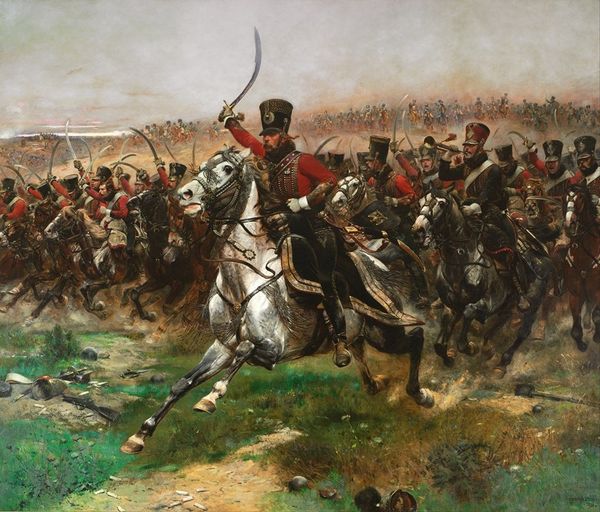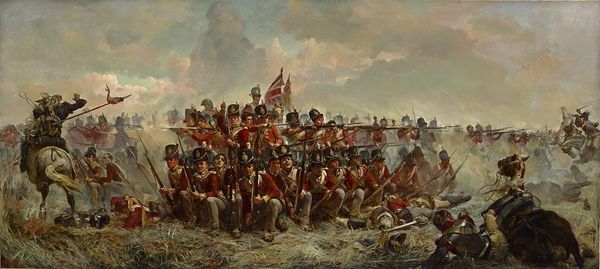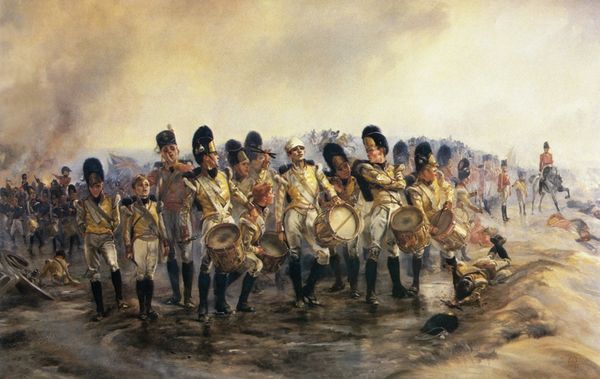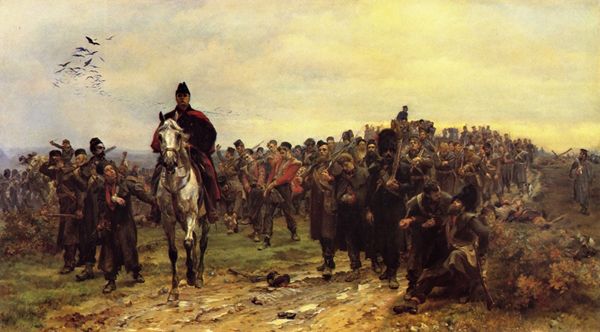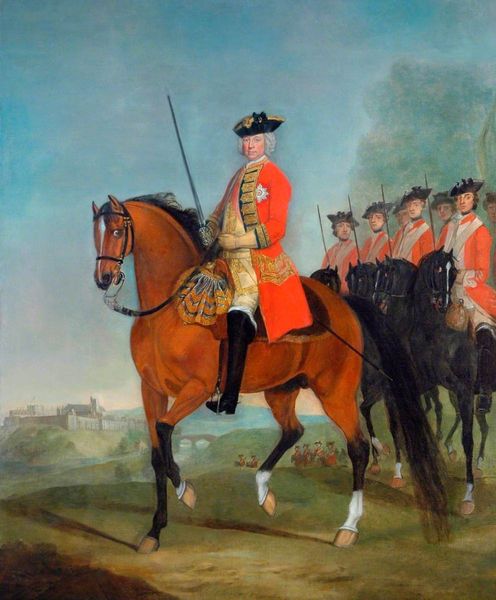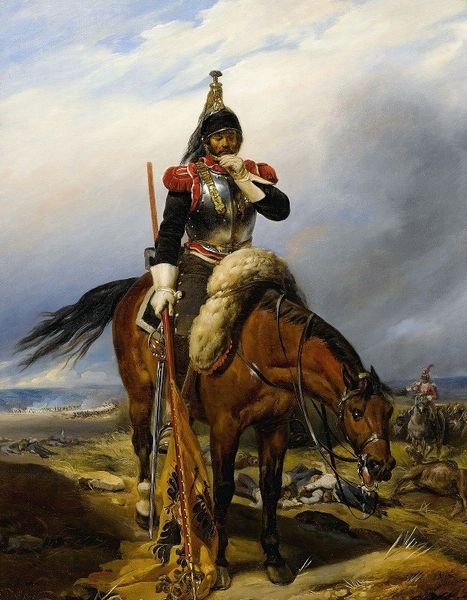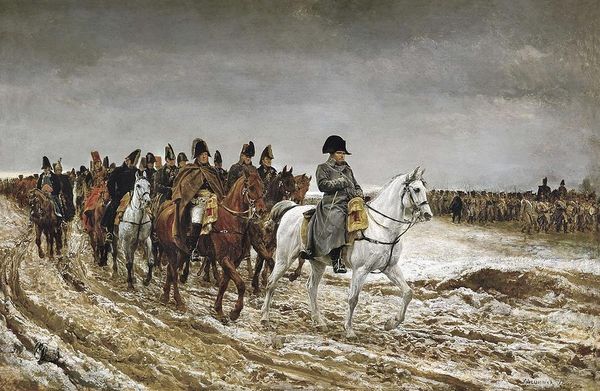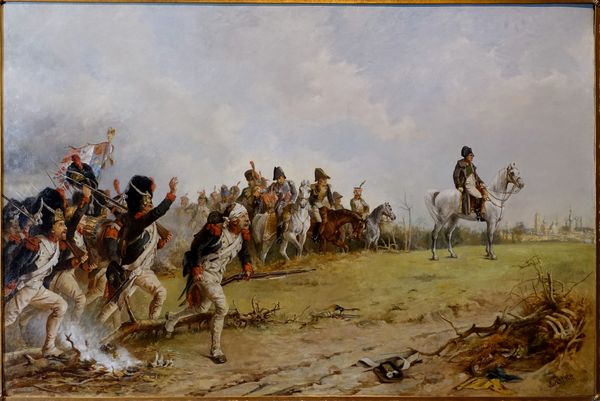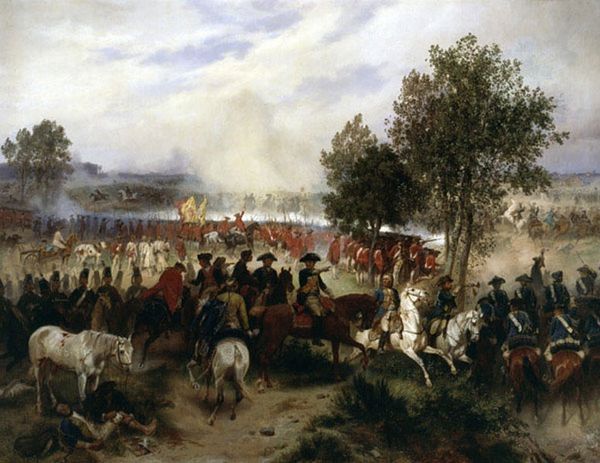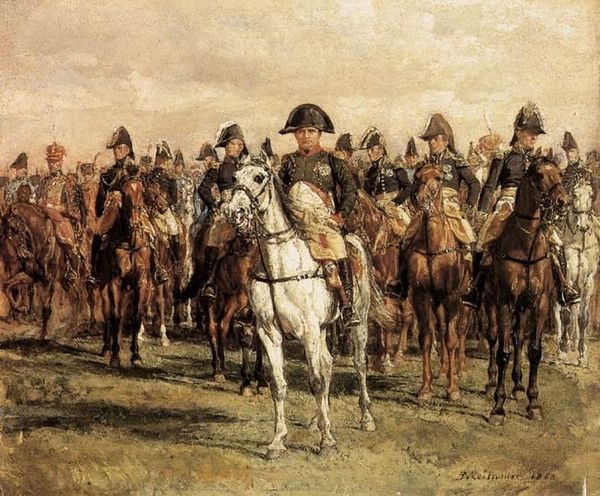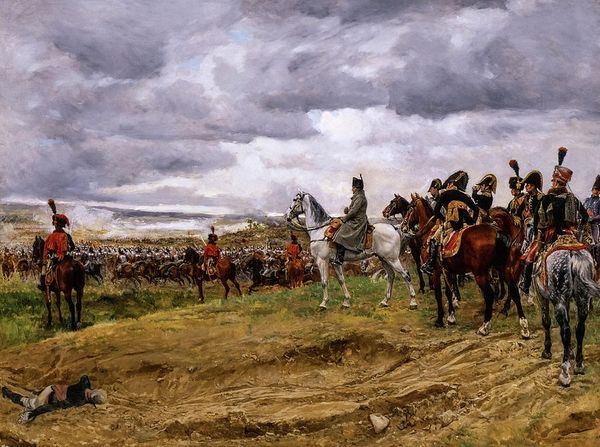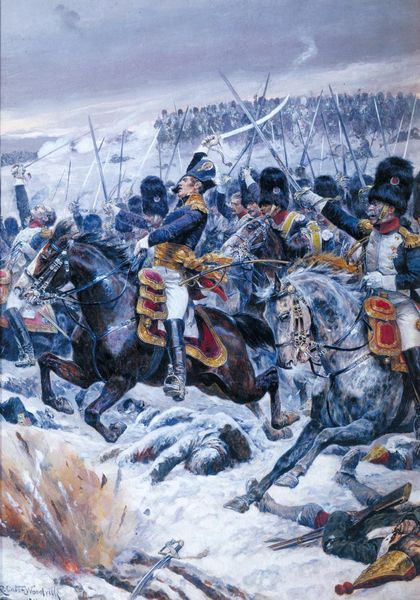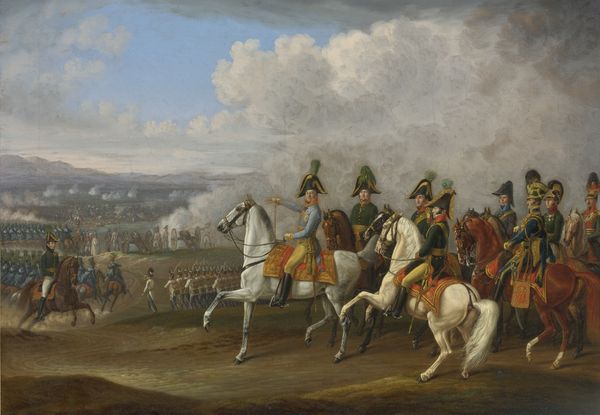
Copyright: Public domain
Editor: Here we have "Scotland Forever," painted in 1881 by Elizabeth Thompson. It’s an oil painting depicting a charge of Scottish cavalry. I'm immediately struck by the energy and the almost frantic movement. What's your take on it? Curator: Let's consider the materiality of the paint itself. Look at the thickness and the way it’s been applied. It’s almost sculptural, isn’t it? How do you think that contributes to the overall feeling of the work? Editor: Definitely, there's a sense of texture and chaos in the brushstrokes that echoes the chaos of the battle. What do you mean when you say "sculptural?" Curator: The application of the paint is not about pure representation; instead the medium contributes to the overall effect of the scene depicted in the canvas, building a relationship between medium, social context and artistic effect. If the surface were flat and even, it wouldn’t convey that same feeling, would it? Consider how readily available oil paints had become by this point, impacting how many artists worked. Editor: No, it definitely wouldn’t. It would feel much more static. Also, thinking about what was consumed here - not only paint but canvas, time, the sheer amount of labor... that’s mind-boggling. I had only ever thought about it being soldiers in action, horses running. Curator: Precisely! Thompson's labour also represents labouring-class men turned military heroes on canvas for consumption, and also speaks to Victorian ideas about national identity. Editor: Wow, I never thought of analyzing it that way before, considering the social elements as much as the artistic ones. Curator: It all goes hand-in-hand when observing material, context, and execution. It can create multiple entry points of discussion and reflection!
Comments
No comments
Be the first to comment and join the conversation on the ultimate creative platform.
